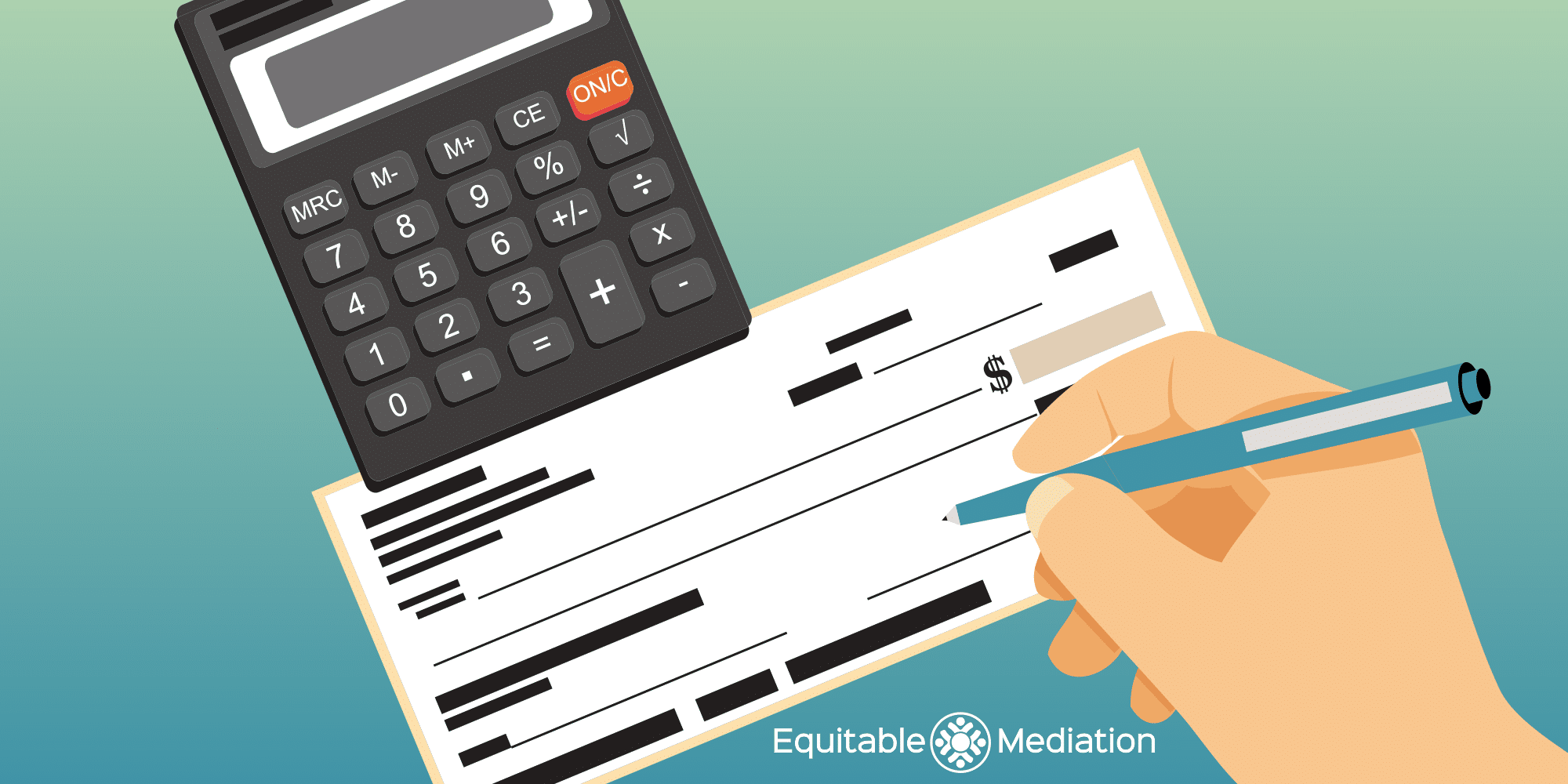Most people going through a divorce think they know the answers to the questions, “What is alimony?” and “How does alimony work?”
But in addition to being the most difficult topic to resolve in a divorce, it’s also the most misunderstood. And there’s a lot of misinformation floating around that makes separating fact from fiction extremely difficult.
Even what it’s called is confusing!
It can be referred to as alimony, spousal support, maintenance, or even spousal maintenance – depending on the state you live in. But to keep things simple, in this post, I’m going to refer to it as alimony.
Because most states don’t have a specific formula on how alimony is calculated, how long it should last, or even if it should apply, it’s crucial that alimony is addressed carefully and thoroughly at the time of a divorce. Because it can have a significant impact on each spouse’s finances for many years into the future. Or quite possibly the rest of their lives!
In my experience, learning the basics of issues that pertain to an individual’s divorce before starting the process can help them better work with their spouse (and their chosen divorce professional) to resolve them. So this post, you’ll learn fundamentals of alimony, some options for negotiating it, and what you can do to maintain the most control in determining the alimony arrangement in your divorce.
Let’s dive in!
What is alimony?
In its simplest form, alimony is financial support – a payment from one ex-spouse to another ex-spouse for that ex-spouse’s living expenses.
How does alimony work? And what is the purpose of it?
Alimony is not meant to unjustly enrich one party or penalize the other.
The purpose of alimony is intended to aid the lower-earning spouse in making the transition from married to single over a pre-determined timeframe.
To give them time to get back on their feet and become self-sufficient after the divorce. Alimony has two components: amount and duration.
Is alimony tax deductible?
As part of the Tax Cuts and Jobs Act, as of January 1, 2019, alimony is no longer tax-deductible for the payor or considered earned income for the payee – at the federal level. It is, however, tax-deductible for the payor spouse, and considered taxable income for the payee, at the state level, but only in certain states.
There are 4 types of alimony:
Periodic alimony payments
With this type of alimony, one party makes a series of regularly occurring (i.e. “periodic”) payments to another party, either for a set time, until a specific amount was reached, or a specific event occurred.
The amount of those periodic payments can be based on either a guideline formula (if the state the parties getting divorced in has one), something negotiated and agreed upon by the parties, or, if that cannot be done, decided by a judge in family court.
Rehabilitative alimony
Rehabilitative alimony is paid to allow the receiving spouse to become financially self-sufficient. It can involve funds to get a degree, receive additional training, or even start a business.
It’s common to combine rehabilitative alimony with other types since working full-time while going to school is quite challenging. And, even when the degree-earning supported spouse graduates, it may still be some time until that dependent spouse becomes financially self-sufficient.
Reimbursement alimony
Reimbursement alimony is used when during the marriage, one spouse supported the other spouse while they attended school and received an advanced degree, such as a law or medical degree.
Reimbursement alimony allows the supporting spouse to be “repaid” for tuition, or to acknowledge they will miss out on the earnings of the degree-earning spouse moving forward.
Alimony buyout or lump sum alimony
Rather than making periodic payments, a single, lump-sum would be provided from one spouse to the other at the time of their divorce.
This can be done in the form of a cash lump sum payment, or it can be done through marital property division (also referred to as equitable distribution or community property division depending on the state).
How long does alimony last?
Typically, the longer the duration of a couple’s marriage, the longer alimony will last. But exactly how long depends on a number of situational considerations. And even in a long-term marriage, permanent alimony is not guaranteed. And just as there are different types of alimony, there are also different options for how long alimony lasts.
They are:
Alimony payment for a set number of years
With this option, the spouses would agree at the time of their divorce how many years and/or months periodic spousal support payments would last. And once that timeframe passed, alimony would end. Some states offer a formula for how long alimony will last, while others leave it up to the divorcing couple (or the family court) to decide.
A fixed alimony dollar amount
Rather than using years to determine how long alimony lasts, the two spouses would agree on a dollar amount instead. And once that amount was reached, alimony would end.
Alimony ending at a triggering event
An amount for the periodic payments would be negotiated when using this option. But rather than alimony ending after a certain time, or dollar amount, it would end when a specific event occurred.
Remarriage of alimony recipient
If a recipient spouse remarries, they are no longer the ex-spouse of the payor, but rather the new spouse of someone else. And in this case, alimony can end.
Death of the alimony payor or payee
In addition to remarriage, the death of the recipient can also cause alimony to end. If it is the payor who passes away, the recipient may be made whole using life insurance.
How is alimony decided in a divorce?
There are two ways alimony (and all other divorce issues) can be settled: you and your spouse can negotiate, or a court will decide for you. In many/most states, family law is extremely vague on how to resolve alimony.
When it comes to an alimony case, every couple’s situation and determining factors are unique. Unfortunately, when the court decides an alimony award, you never know how they will decide it. So you could wind up with an outcome you don’t think is fair or that doesn’t meet your needs.
While most states don’t have a set formula for how alimony is calculated or how long it will last, the good news is you have a lot of flexibility and can maintain a lot of control if you settle out of court.
It’s common (and normal) for divorcing spouses to have different points of view on child custody, division of property, child support and/or alimony. But even if you have disagreements, it doesn’t mean you have to go in front of a judge to get those issues resolved. Not all divorces have to go to court.
Resolving disputes outside of court saves you time and money. It can also help you avoid or lessen a lot of the negative emotional impact that contested divorce cases can have.
When it comes to alimony, every couple’s situation and determining factors are unique.
Options for negotiating a periodic alimony payment
Since rehabilitative and reimbursement alimony arrangements are extremely case-specific, I’m going to focus on the two more common types: periodic alimony payments and lump-sum alimony payments.
Option 1: guideline approach
For alimony payments made periodically, guidelines can offer a straightforward way to agree on an amount – provided you meet the criteria for using it. Enter some data, click the button, and that’s that!
But, guidelines don’t exist in all 50 states. In fact, far more states do not have a guideline than do, so this approach may not work depending on where you live.
Option 2: budget-based approach
Periodic alimony payments may also be determined by using a budget-based approach. You and your spouse would prepare an outline of your anticipated monthly expenses, compare what you need with what you earn, and use that difference to come up with a financial support amount.
Option 3: percentage of incomes approach
Finally, periodic alimony payments may be determined using a percentage of incomes approach. You and your spouse would negotiate, and agree on, a percentage of the total income each of you will have post-divorce. Then doing some math, you and your spouse will figure out “who owes who what” to achieve the desired ratio of incomes. And that will become the basis for your alimony payments.
Pros and cons of periodic alimony payments
Pros of periodic payments:
- Periodic payments are easy to execute. Once you and your spouse come up with an amount and duration, it’s pretty easy to set up a bank transfer or direct debit from someone’s paycheck.
- It provides the recipient with financial stability post-divorce. For some, having to manage finances can be a challenge. Receiving a periodic payment can help ease that burden for the recipient.
- It can be terminated in the case of remarriage by the recipient party. Once the paying spouse gets word that their ex-spouse is remarried, the payments can be easily stopped.
- It doesn’t require the paying party to come up with a lump sum of money, give away additional marital assets, or take on additional marital debt. It may be extremely difficult or even impossible to come up with the cash or assets required to satisfy an alimony buyout, especially in a long-term marriage where alimony may be significant.
Cons of periodic payments:
- Periodic payments may be a constant reminder of a failed marriage. And can create quite a bit of stress when that direct debit or bank transfer is paid and/or received.
- The responsible party may stop paying without any warning or reason. Leaving the recipient no choice but to hire a lawyer and/or go to court.
- The parties’ incomes may change over the term of the alimony agreement. If you and your spouse didn’t agree at the time of your divorce on what alimony would be as your incomes changed, you’ll need to renegotiate a new alimony amount based on your then-current incomes.
Options for negotiating a lump-sum alimony buyout
Option 1: buyout using marital property and/or debts
Rather than making periodic alimony payments, the paying spouse can offer the receiving spouse an additional share, or exclusive ownership of, tangible marital property like a house or retirement account. This can also work when the payor takes on an additional share of the marital debt.
Option 2: buyout using liquid assets
Rather than buying out an alimony obligation with illiquid assets like a house, or taking on marital debt, in this option, a lump sum of liquid assets like cash or stock would be provided to satisfy the alimony obligation.
Pros and cons of an alimony buyout
Pros of lump sum alimony:
- It eliminates the anger and/or sadness that may accompany periodic payments. By making a single lump-sum payment, neither party will be regularly reminded about their failed marriage.
- It eliminates the risk that the payments will just stop. Once the lump sum is paid, that’s it.
Cons of lump sum alimony:
- Determining a buyout amount is complex. Buyouts are filled with assumptions, risks, and require specialized knowledge to calculate them.
- It can be difficult to come up with the property. If the alimony amount and duration you’re considering is substantial, coming up with the assets for the buyout, may prove challenging.
- The party receiving the lump sum may have difficulty managing it. And if they squander it, there’s no going back for more.
- If the recipient gets remarried soon after the divorce, the responsible party may have overpaid. When making periodic payments, the payor spouse can simply turn off the faucet. But once a lump sum is paid, there are no refunds.
Alimony recap and conclusion:
There’s no doubt that alimony is a complex issue and one that’s difficult to resolve. That’s because alimony is not a one-size-fits-all matter – every couple’s situation, circumstance and determining factors are unique.
But you will have the most control over settling the terms of alimony (and all other divorce issues) by negotiating out-of-court.
That doesn’t mean you have to struggle trying to resolve alimony on your own. In fact, for most divorcing couples, this topic is much too complex (and emotional) to resolve without professional help.
By using an alternative dispute resolution process like mediation, you can increase the likelihood of reaching an out-of-court negotiated agreement you and your spouse both find acceptable and both had a hand in creating.
Hopefully, after reading this post, you have a better understanding of this complicated issue and feel better prepared to work with your spouse (and your chosen divorce professional) – to negotiate a mutually agreeable out of court alimony agreement.





